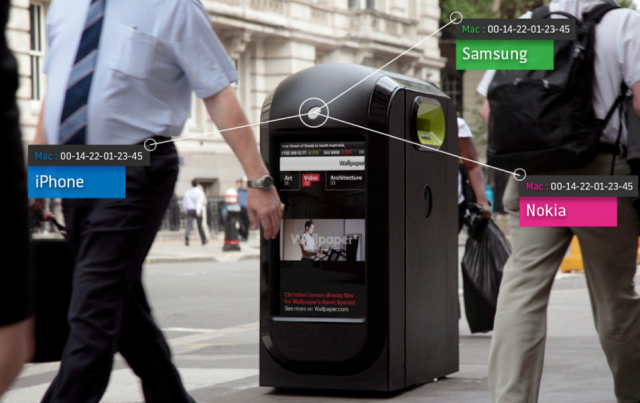As we’re working on the book, Sara and I are planning on sharing some of the news items and blog posts that catch our attention each week. We’ll also plan on talking through some of the things we’re reading and working on in this space. In keeping with boolean condition logic of the if/then working title for the book, we’ll be tagging these posts as “else.” Links aren’t necessarily endorsements, but they do point to ideas that got us thinking this week.
If you want to keep up with what we’re reading/thinking about on a weekly basis, the best way is to subscribe to the ELSE feed, either as an email newsletter (coming soon) or through RSS.
—–
This week we look at challenges in the using quantified self data, developments in the NSA surveillance coverage, and round out with a few throwbacks to the Victorian age of technology. On to the links:
Inside the Nike+ Accelerator: Fueling the quantified-self movement – Engadget
TechStars accelerator working on Nike+ to build innovation on the Nike platform. Article talks a lot about the importance of opening up the Nike+ API for development innovation (right now it’s only open to these ten accelerator companies).
Why The Quantified Self Needs A Monopoly – ReadWrite
Highlights one of the big barriers to consumer adoption right now, that is correlating all these quantified self data sources into one, meaningful view. To do that you need to a) be able to get the data into one place, b) have it speak to each other, and c) know what you are looking at once you can see it all in one place. We might argue that you don’t need an Apple or Microsoft monopoly for that necessarily. But we will need tools that pull this together; maybe something more along the lines of Mint.
The Public-Private Surveillance Partnership – Bloomberg
Bruce Schneier walks us through the implicit business models that got us into the current surveillance state: “Imagine the government passed a law requiring all citizens to carry a tracking device. Such a law would immediately be found unconstitutional. Yet we all carry mobile phones.” [Incidentally, Schneier is also a Fellow at the Berkman Center this year along with Sara].
This Recycling Bin Is Stalking You – The Atlantic Cities
Recycling bins in London are tracking MAC addresses from passing smartphones and Wifi-enabled devices, essentially bringing tracking cookies from the internet into the physical world. Turns out this might actually be illegal. 
The Atlantic Cities
A Cheap Spying Tool With a High Creepy Factor – NYTimes
Security researcher Brendan O’Connor uses cheap Raspberry Pi devices to monitor Wifi signals, proving that conducting surveillance is becoming easier, no matter who you are.
Other Agencies Clamor for Data N.S.A. Compiles – NYTimes
Once the data is in a format where it can be activated, others will find new uses for it.
Searching Big Data for ‘Digital Smoke Signals’ – NYTimes
The United Nations Global Pulse team is using sentiment analysis and mobile data to catch early signals for global economic trends to develop faster, more adaptive and responsive aid programs.
Why the Sun is Setting on the Wild West of Ride-Sharing – Wired
Car sharing dropoffs at airports are started to see a crackdown in SFO. Policies still protect taxi and limo service domain here and new regulations requiring insurance companies could increase operating costs. This could slow down the markets where consumers are taking underused assets and making them liquid. John recently wrote about how Uber saved the day in a recent travel snafu.
3-D Printing the 19th Century – NYTimes
Martin Galese is bringing back patents from a bygone era, 3-D printing them in all their beautifully-designed glory. Some of these designs might not have been easily manufactured in their time.
Last week Sara was reading Rebecca Solnit’s River of Shadows: Eadweard Muybridge and the Technological Wild West. The book looks at the historical context around Muybridge’s photographic technology developments that increased the shutter speeds and introduced the ability to almost slow down time into smaller knowable bits. These developments paved the way for modern cinema, but also ran parallel to Victorian explorations of scientific discovery. Sara wrote about some interesting parallels with Muybridge’s body movement studies and the Quantified Self movement; film allowed us to slow down and dissect the bodies’ gate; sensors like the Fitbit allow us to track a walking gate all day long.
 (image) My daily reading took me to two places today – to Compton, California, well-known for its crime to anyone who grew up in LA (as I did), and to this NYT piece, which muses that the city, once the place we went to disappear, is likely to be the first place where anonymity is no longer guaranteed. (Not coincidentally, Pell found both pieces as well in his excellent NextDraft).
(image) My daily reading took me to two places today – to Compton, California, well-known for its crime to anyone who grew up in LA (as I did), and to this NYT piece, which muses that the city, once the place we went to disappear, is likely to be the first place where anonymity is no longer guaranteed. (Not coincidentally, Pell found both pieces as well in his excellent NextDraft).
